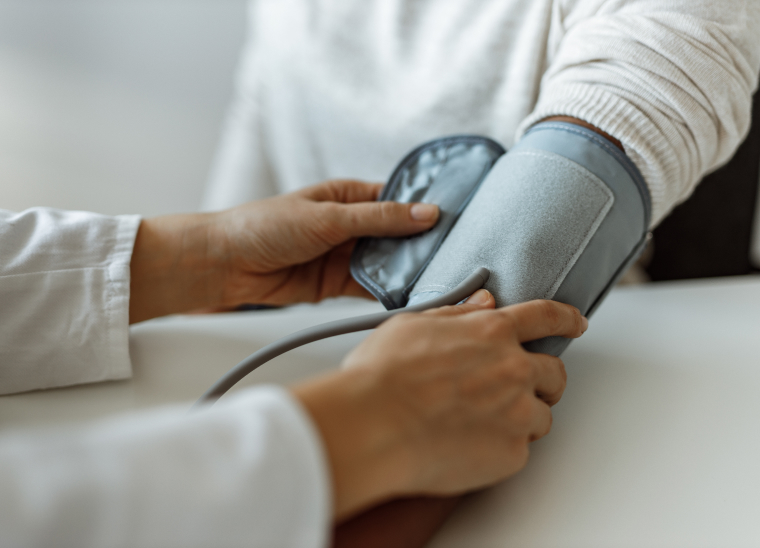Biometric Screening Explained
In a world that will continue to be dominated by COVID-19, health is top of mind for everyone these days — especially employers. Biometric screenings are a part of preventative care that can be conveniently done at the workplace. They are like a quick and condensed check-up without going to the doctor. The results of the screening indicate if the person is at risk for serious health conditions.
What is Biometric Screening?
Let’s define biometric screening more specifically. According to the Centers for Disease Control and Prevention (CDC), the biometric testing definition is: “the measurement of physical characteristics such as height, weight, body mass index, blood pressure, blood cholesterol, blood glucose, and aerobic fitness tests that can be taken at the worksite and used as part of a workplace health assessment to benchmark and evaluate changes in employee health status over time.”
What Does a Biometric Screening Include?
At a biometric exam, a number of health indicators will be tested, including blood pressure, glucose (blood sugar) levels, lipids (cholesterol, LDL, triglycerides, HDL), waist circumference, and body mass index. Height and weight will also be recorded. The reason for biometric testing is to display your health and alert you to any changes in your status.
Glucose (Blood Sugar)
Glucose in the blood reflects energy levels. Monitoring glucose levels can help determine if someone is prediabetic. Note that blood glucose will be different if a person fasts before it is measured versus eating and drinking normally beforehand.
Lipids
Cholesterol is a fat-like substance found primarily in meat and dairy products but is also produced by the human body itself. There are two types of cholesterol measured by a biometric exam: low-density lipids (LDL), also known as bad cholesterol, and high-density lipids (HDL), also known as good cholesterol.
The exam will also measure triglycerides, a type of fat that resides in the blood. To calculate the total blood cholesterol, the HDL and LDL are added together, plus 20% of triglyceride levels.
Blood Pressure
Blood pressure is written as a large number and a slightly smaller number separated by a slash. For example, 140/90 mm Hg is a blood pressure reading. The first number is the maximum pressure exerted by heartbeats, and the second number reflects the pressure between beats.
Normal blood pressure is less than 120/80 mm Hg, and high blood pressure is over 140/90. Levels in between these two readings would reflect pre-hypertension.
Waist Circumference
The waist is commonly the slimmest part of the abdomen, placed just below the last rib and above the hip bones. Knowing this measurement helps to gauge abdominal fat. A waist over 35 inches for a woman who is not pregnant may reflect an increased risk for diseases related to obesity (such as sleep apnea). Similarly, a waist over 40 inches for a man may reflect the same.
Body Mass Index (BMI)
Body mass index measures body fat and determines if someone is healthy, underweight, overweight, or obese. To calculate a BMI, height, as well as weight, are taken into account. A high BMI reflects an increased risk for cancer, diabetes, and other conditions. Knowing if you are at risk is an opportunity to question your health habits and prepares you for your next visit to the doctor’s office.
The Importance of a Biometric Health Screening
Understanding the biometric screening meaning can educate a person about the present state of his or her own body so that they can have a productive discussion with a doctor about any changes needed regarding lifestyle, medication regime, or diet. For example, knowing you have high blood pressure can encourage you to eat more produce and take in less sodium.
Additionally, it is helpful for employers to encourage employees to be mindful of their health status to accommodate and prevent chronic health issues amongst employees. A company may be in a position to prevent health concerns from turning into problems, perhaps by budgeting for standing desks or ergonomically designed chairs. The workplace can also encourage interdepartmental physical activities like volleyball matches, invest in an on-site gym, or provide healthier snacks in the break room. This can prevent further health issues and increase employee wellbeing, productivity, and retention.
How to Prepare for a Biometric Exam
Now that you know what is included in biometric screening, you should feel prepared. But here are some things you can do to try to be healthy ahead of time.
To get an accurate snapshot of the present state of your body for your biometric screening, do not do anything irregular beforehand. Do not chug an energy drink or swallow a weight-loss supplement to try to get better numbers. For a successful exam, note the following:
- You will likely be expected to fast before the exam. Do not ingest any food or drink except for water 9-12 hours before your scheduled exam. Do not forget to stay hydrated with water. Black tea or coffee is also permitted.
- Wear lightweight, loose-fitting, comfortable clothing that allows for easy measurements. Remember, waist circumference, weight, and height will be measured and blood will be drawn. You will need to roll up your sleeve. Pack a change of clothes or layers if necessary.
- Take prescribed medications as recommended by your provider beforehand.
- Additionally, do not binge on anything beforehand: especially sugar or alcohol.
- Relax. If you are worried about your results, remember that they are not set in stone. The recorded numbers are a snapshot of the present moment. Take some deep breaths. Try to schedule your appointment when you will be naturally relaxed.
- Talk to the medical professionals if you have any questions beforehand. Tell them if you have trouble with needles, so they know to take extra care.
Eden Health Can Bring Biometric Screening to You
Want an easy way to host a company-wide biometric screening at your workplace? Eden Health provides 15-minute biometric testing pop-up medical clinics so you can quickly and conveniently provide this service to your employees. Schedule a workplace pop-up by meeting with a member of our team.
This blog is intended to be informational in nature. The information and other content provided in this blog, or in any linked materials, are not intended and should not be construed as medical advice, nor is the information a substitute for professional medical expertise or treatment.
If you have any questions or concerns, please talk to your Care Team or other healthcare provider. Never disregard professional medical advice or delay in seeking it because of something you have read on this blog or in any linked materials.





